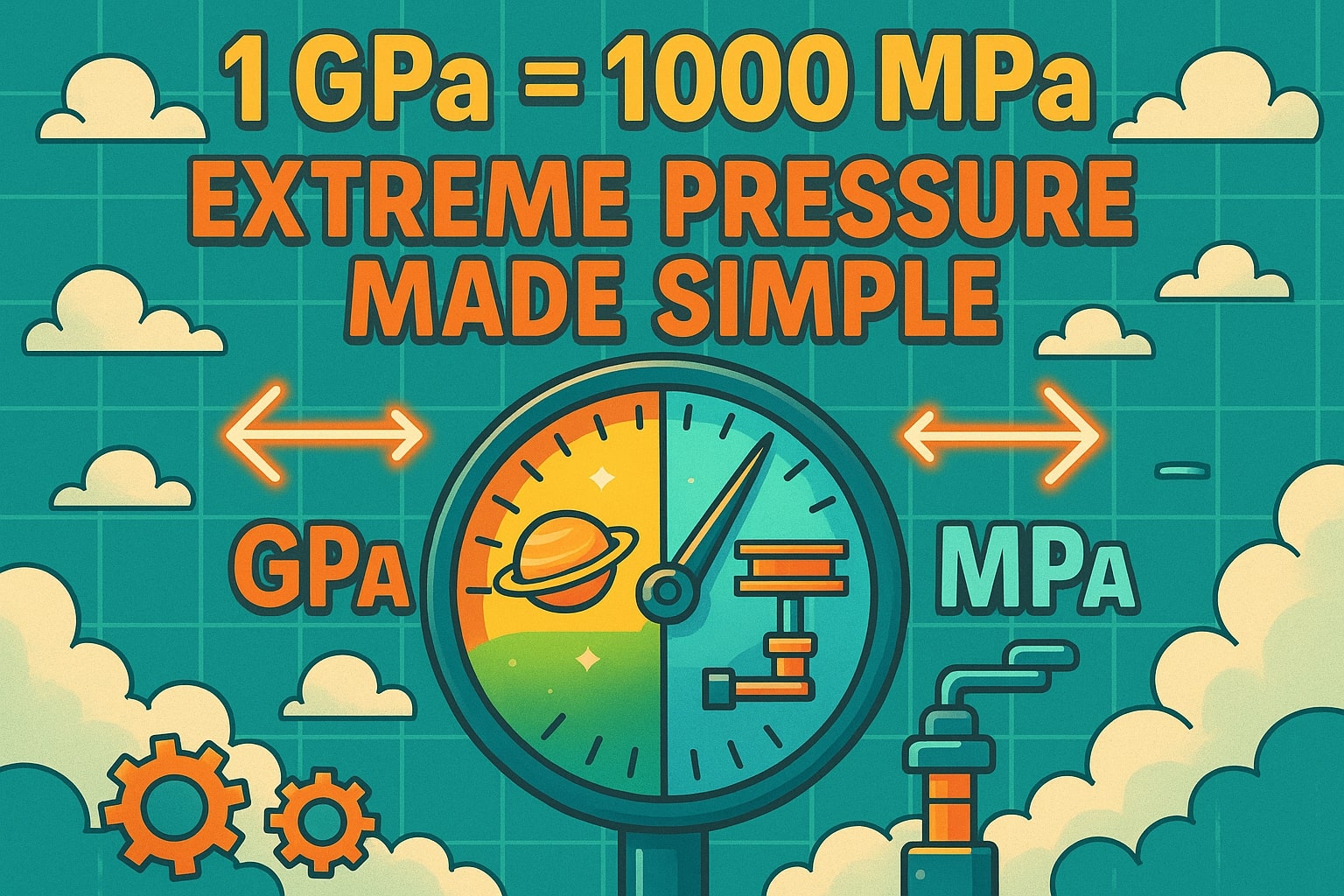Gigapascal to Megapascal – How to convert GPa to MPa
Need to convert gigapascal to megapascal? Both units belong to the SI (metric) system, but they measure pressure on very different scales. Gigapascals represent extreme forces, often used in geophysics and materials science, while megapascals are the standard for construction, hydraulics, and industrial testing. Converting between them is simple, and understanding when each applies helps bridge advanced research with real-world applications.

What is a gigapascal (GPa)?
A gigapascal equals 1 billion pascals (1 × 10⁹ Pa). It’s primarily used for extreme-pressure scenarios, including:
-
Geoscience and planetary studies, where Earth’s mantle and core are modeled at pressures reaching hundreds of GPa.
-
Advanced material research, like testing synthetic diamonds or superhard composites.
-
High-pressure physics, including shockwave experiments and nuclear research.
Gigapascals aren’t practical for most engineering work, but they’re essential for understanding the upper limits of material and planetary behavior.
What is a megapascal (MPa)?
A megapascal equals 1 million pascals (1 × 10⁶ Pa) and is widely used in engineering and industry:
-
Construction standards, where the compressive strength of concrete is usually listed in MPa.
-
Hydraulics and pipelines, where operating pressures typically fall between a few MPa and several dozen MPa.
-
Testing and certification, such as measuring the tensile strength of metals and industrial components.
MPa is preferred for most industrial tasks because it simplifies large numbers without jumping to extremes like GPa.
How to convert gigapascal to megapascal
Since both units scale directly from the pascal, the math is straightforward:
1 GPa = 1,000 MPa
To convert:
Megapascals (MPa) = Gigapascals (GPa) × 1,000
Example: If a material testing machine applies 2.5 GPa of pressure:
2.5 × 1,000 = 2,500 MPa
For instant, hassle-free results, use our Pressure Converter or explore other Conversion tools for any pressure-related calculation.
Did you know?
-
Earth’s deep interior: Models of the planet’s lower mantle involve pressures of 135–360 GPa, equivalent to 135,000–360,000 MPa when scaled for engineering simulations.
-
Ultra-hard materials: The process to create synthetic diamonds or aggregated diamond nanorods often uses 15–25 GPa, which translates to 15,000–25,000 MPa during synthesis.
-
Concrete and steel comparison: While structural concrete usually ranges between 20–50 MPa, and structural steel yields near 250 MPa, experimental alloys designed for aerospace may undergo tests exceeding 1 GPa (1,000 MPa).
-
Industrial waterjets: Cutting systems can operate up to 400 MPa, but researchers pushing the limits of jet technology model designs using GPa-scale pressure data.
From Labs to Job Sites: Why This Conversion Matters
In 2020, aerospace researchers tested next-generation alloys designed for rocket and turbine components at pressures beyond 1.8 GPa to simulate extreme conditions. According to a study in Acta Materialia, the data was reported in gigapascals for scientific accuracy but later converted to megapascals for engineering teams developing manufacturing processes.
By switching between GPa and MPa, researchers could present findings in scientific journals while ensuring compatibility with industrial standards, where MPa remains the baseline for material specifications and safety codes.

Making Sense of Scale
Converting gigapascal to megapascal is as easy as multiplying by 1,000. While gigapascals define the frontier of physics and materials science, megapascals keep things practical for engineers, builders, and manufacturers. Knowing how to move between these units helps connect cutting-edge research to real-world applications.
For fast and precise conversions, try our Pressure Converter or check other Conversion tools to simplify every calculation, from lab research to industrial design.

